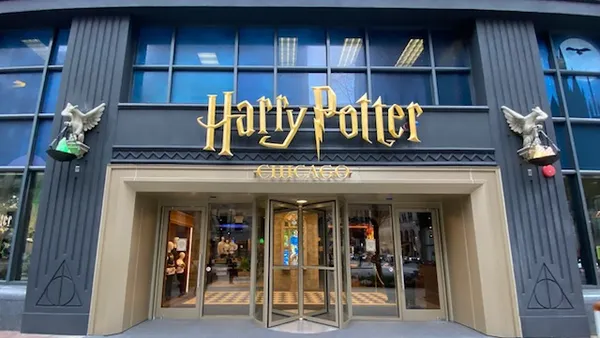Dive Brief:
-
India is the top developing country for retail investment, on the strength of a growing economy and middle class, and a favorable regulatory environment, according to the latest edition of A.T. Kearney's Global Retail Development Index (GRDI), emailed to Retail Dive.
-
China came in second, a ranking mostly driven by size and the continued evolution of its retail environment, despite slowing economic growth overall.
-
The GRDI also found that shopping via smartphone will account for the majority of online retail sales in developing countries in the coming years. In China, an estimated 70% of sales by Alibaba’s Tmall and JD.com are to mobile shoppers. Alibaba-owned Lazada said that almost 60% of sales in Southeast Asia come from mobile shoppers and in Nigeria, e-commerce hub Jumia estimates that 63% of orders are via mobile, according to the report.
Dive Insight:
India has become a very intriguing retail market for many reasons. China's slide into second place doesn't mean China is having problems, just that it's a maturing market and growth has to slow at some point. In India, however, a growing economy and growing interest among consumers in foreign brands, combined with a loosening of restrictions governing foreign ownership of India retail concerns, are creating a huge opportunity.
There's no need to tell that to Amazon, which has been operating and selling there for many years and very recently began making some headway against India e-commerce market leader Flipkart
The report notes that 2016 was a very active year for other foreign retailers to join Amazon in India. It lists as examples: Armani Exchange, Cole Haan, Heatwave, Muji, Massimo Dutti, Kate Spade and others. H&M also has plans to open several stores there, and sportswear brands Puma and Adidas are looking for government approval to operate fully-owned retail stores and online portals. IKEA, the world’s largest furniture retailer, also plans to invest $1.56 billion to set up 25 stores nationwide.
The report also mentions Flipkart's reported interest in a $1 billion acquisition of fellow Indian e-commerce giant Snapdeal. Those companies may have the aim of pairing up to better compete against Amazon, but perhaps their planned union also will make room for even more foreign retail entries into the market. Walmart reportedly has been eyeing the Indian market for a while, and though a once-rumored Flipkart investment may not happen at this point, it wouldn't be a surprise to see that U.S. retail giant invest in India in a big way.
However, any retailers investing in India had better come prepared with a very good mobile app and mobile commerce strategy. In India, and in many other developing countries, there is really no distinction between mobile commerce and e-commerce — mobile shopping is leading the way.
“Mobile shopping is challenging the ways retailers think about global expansion, as well as about their role in the value chain,” said Mike Moriarty, an A.T. Kearney partner and co-author of the study, in a statement. “We are expecting more retailers to use mobile as part of their future expansion plans.”













